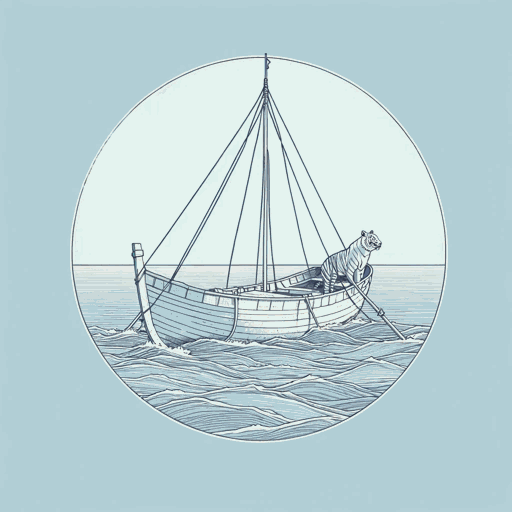86 pages • 2 hours read
Yann MartelLife of Pi
Fiction | Novel | Adult | Published in 2001A modern alternative to SparkNotes and CliffsNotes, SuperSummary offers high-quality Study Guides with detailed chapter summaries and analysis of major themes, characters, and more. For select classroom titles, we also provide Teaching Guides with discussion and quiz questions to prompt student engagement.
Part 1, Chapters 13-24Chapter Summaries & Analyses
Part 1: “Toronto and Pondicherry”
Part 1, Chapters 13-24 Summary
Pi elaborates on the animal experience of territoriality and the social hierarchies that constitute physical animal space. He differentiates between alpha, omega, and beta animals to illustrate how social anxieties explain animal violence. These hierarchies are crucial for maintaining some semblance of social order as embodied by a lion-tamer who uses various strategies to impose alpha status. Omega animals, meanwhile, compensate for social inferiority by currying favor with their masters.
In a narrative break, the author describes Pi’s house in Canada, which is adorned with relics and religious artifacts such as the Virgin Mary, a statue of Shiva, and a photo of the Kaaba. Also present are various calligraphy artworks, holy texts, and devotional objects like a wick lamp, water cup, incense, and bowls of powder.
Pi’s parents raised him as a Hindu. He feels especially drawn to the pantheistic elements of Hinduism, as well as its sights, sounds, and smells. While he continues to see himself through a Hindu ontology, Pi mentions that his first encounter with Christianity was formative. In this encounter, Pi meets a Catholic priest named Father Martin in a church while on vacation in Munnar, a mountainous town in the state of Kerala.
Related Titles
By Yann Martel



